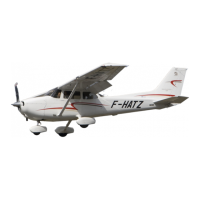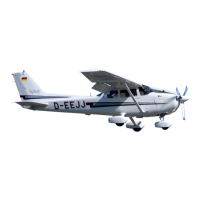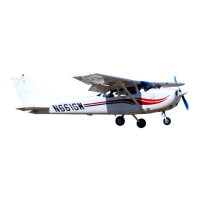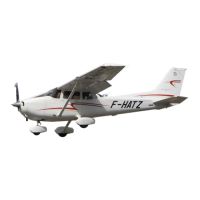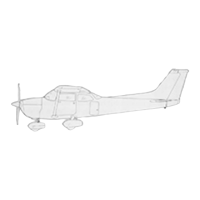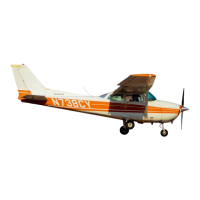SECTION 3
EMERGENCY
PROCEDURES
FORCED LANDINGS
CESSNA
MODEL 172S NAV
III
If
all attempts to restart the engine fail and a forced landing is
imminent,
select a suitable field
and
prepare for the landing as
discussed under the Emergency Landing Without Engine Power
checklist. Transmit Mayday message
on
121.5 MHz giving location
and
intentions
and
squawk 7700.
Before attempting
an
"off airport" landing with engine power
available,
one
should
flyover
the landing area at a safe but low
altitude
to inspect the terrain for obstructions
and
surface
Iconditions, proceeding as discussed
in
the Precautionary Landing
With Engine Power
checklist.
Prepare for ditching by securing or jettisoning heavy objects located
in
the baggage area
and
collect folded coats for protection
of
occupants' face at touchdown. Transmit Mayday messages
on
121.5 MHz giving location and intentions and squawk 7700. Avoid
a
landing flare because of the difficulty
in
judging height over a
water surface. The
checklist assumes the availability of power to
make a precautionary water
landing.
If
power is not available, use
of the airspeeds noted with minimum
flap extension will provide a
more
favorable attitude for a power off ditching.
For a forced
landing situation, set the STBY BATT Switch to the off
position.
Do
not set the AVIONICS (BUS 1
and
BUS
2)
Switch or
the
MASTER Switch (ALT and
BAT)
to the OFF position until a
landing is assured. When these switches are
in
the OFF position,
the
airplane electrical systems are de-energized.
Before performing a forced
landing, especially
in
remote and
mountainous areas, activate the ELT transmitter
by
positioning the
COCkpit-mounted
switch to the
ON
position. For complete
information
on
ELT operation, refer to the Supplements, Section 9.
U.S.
172SPHAUS-Ol

